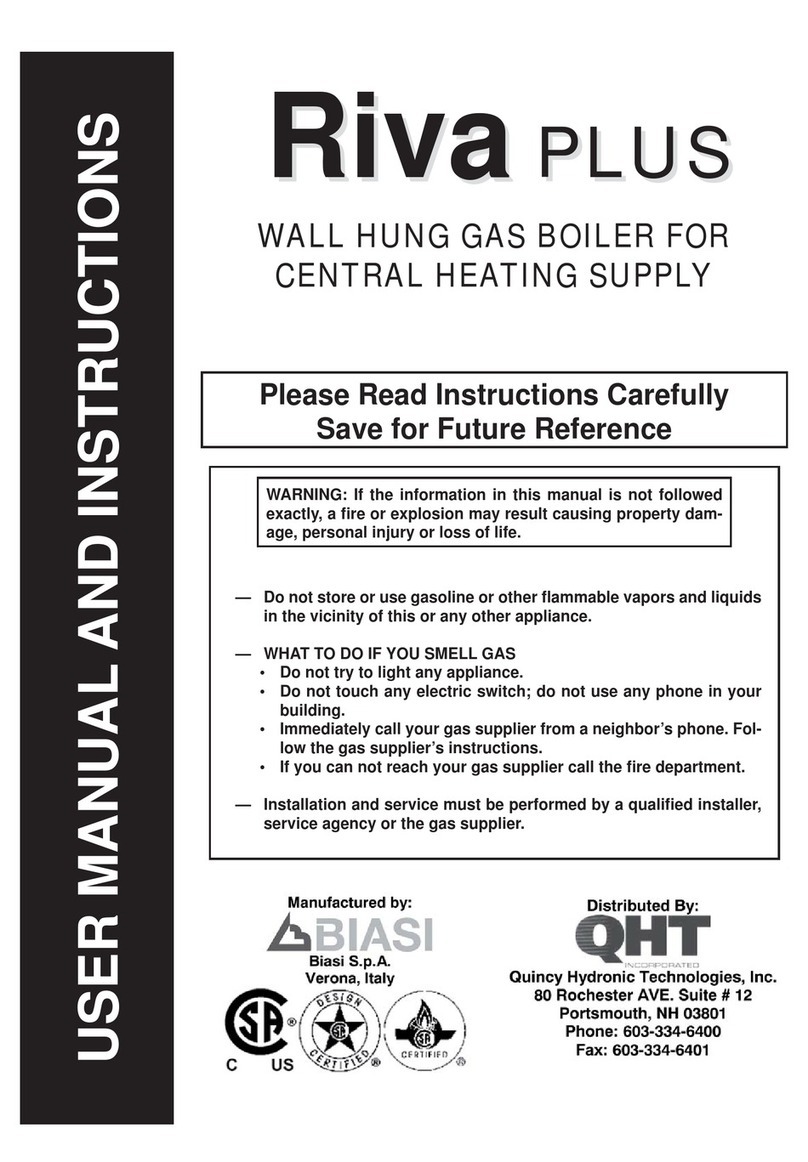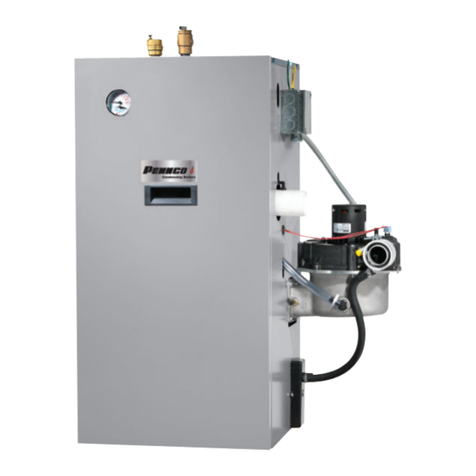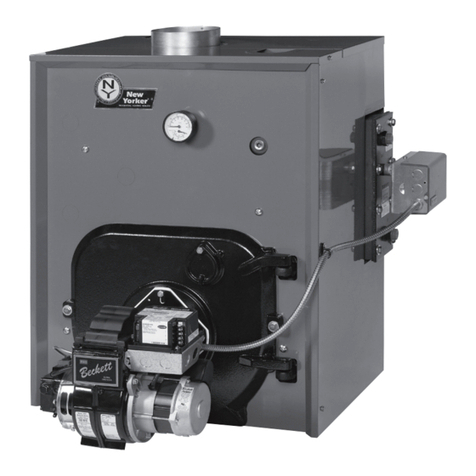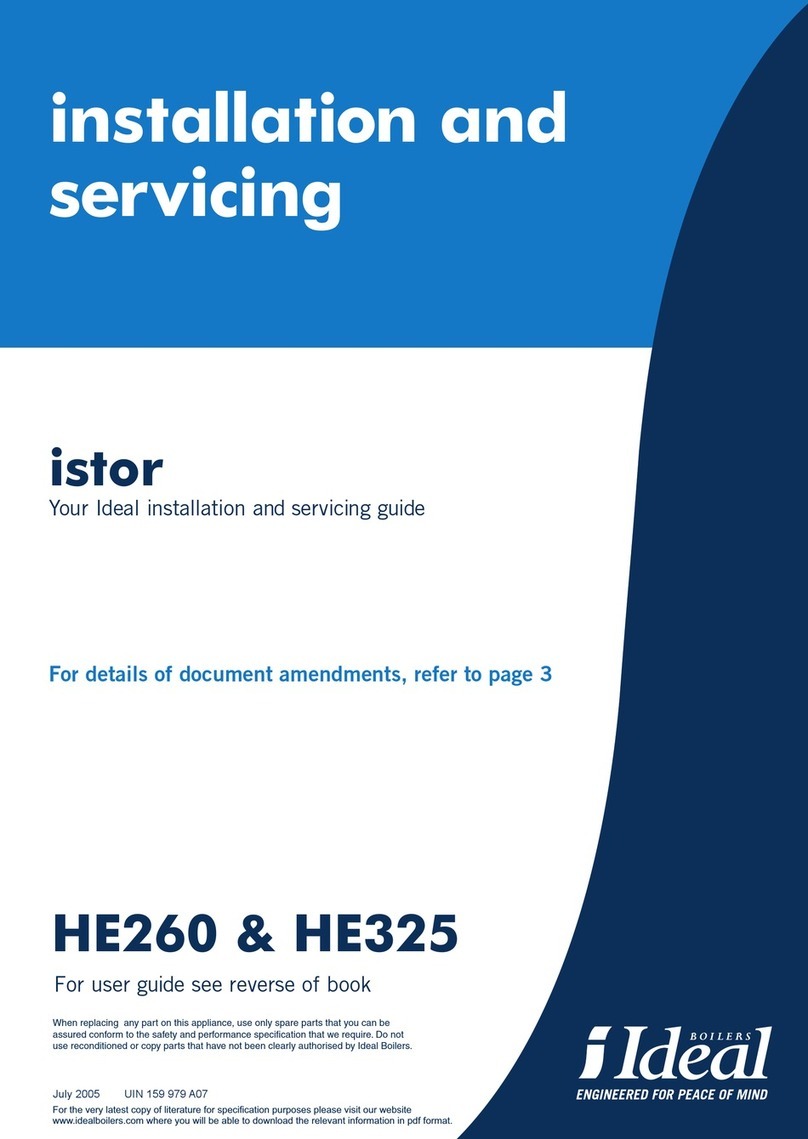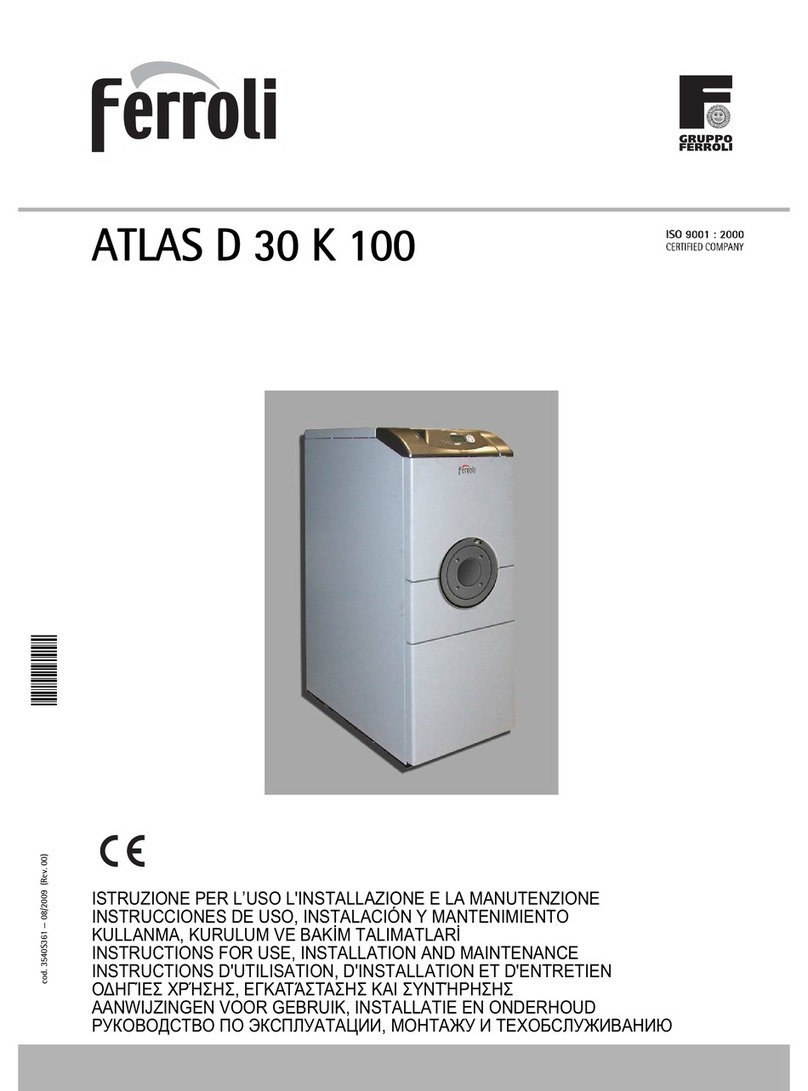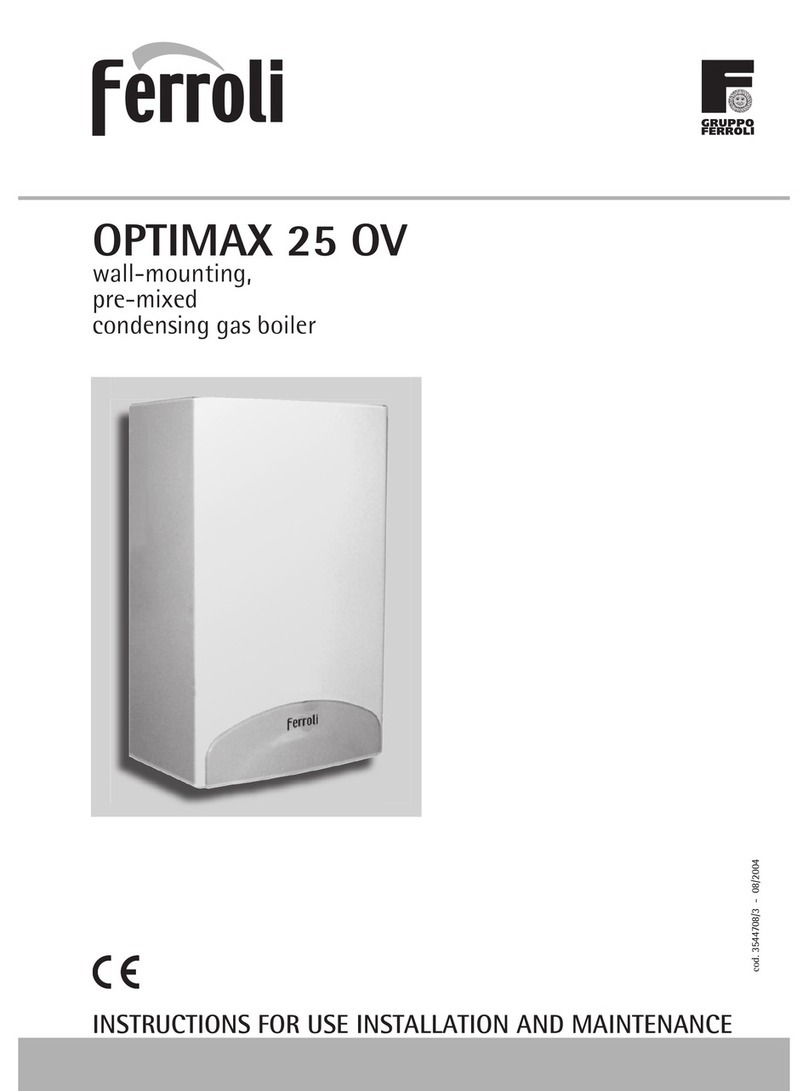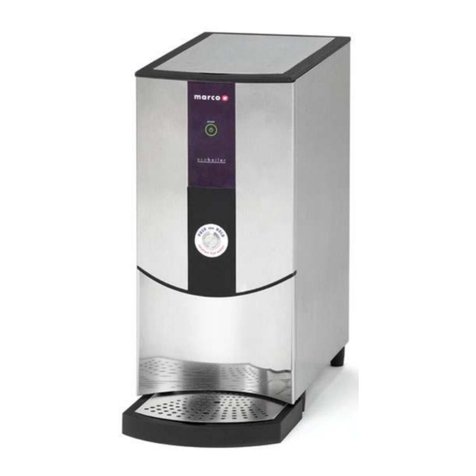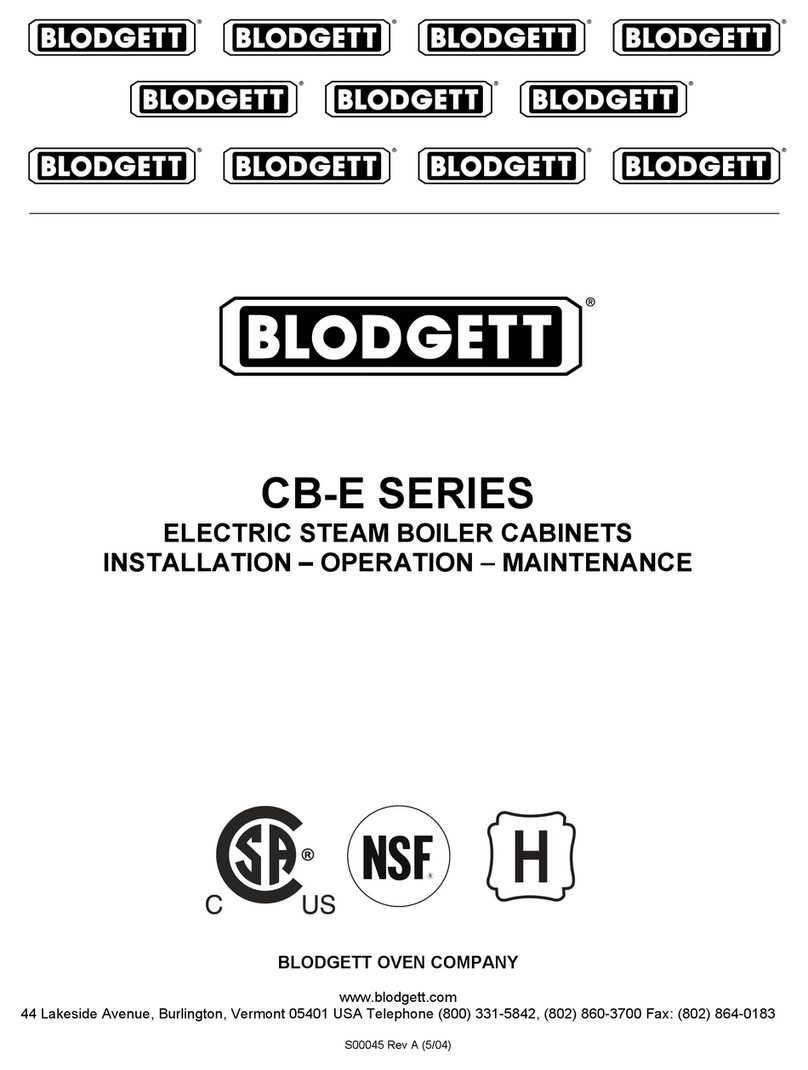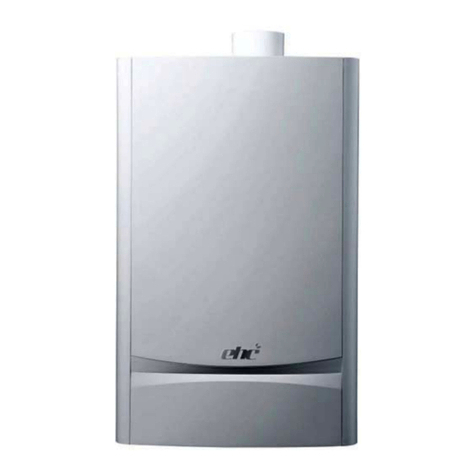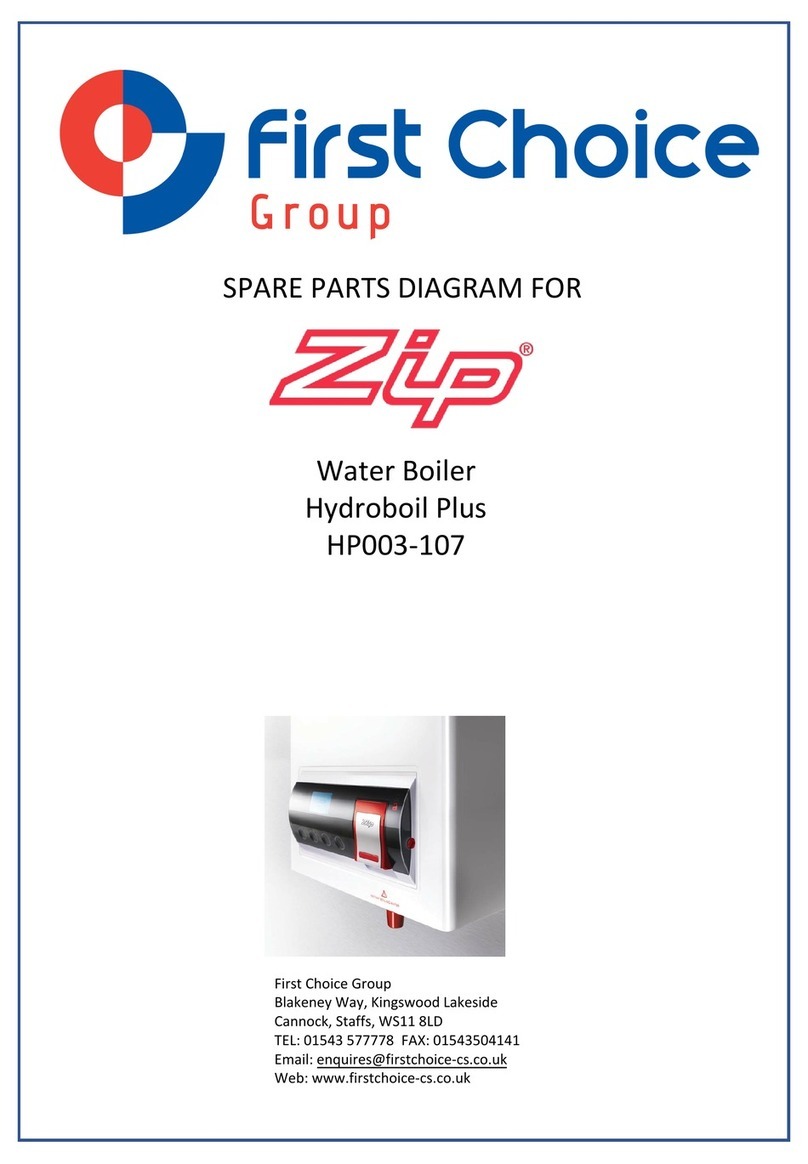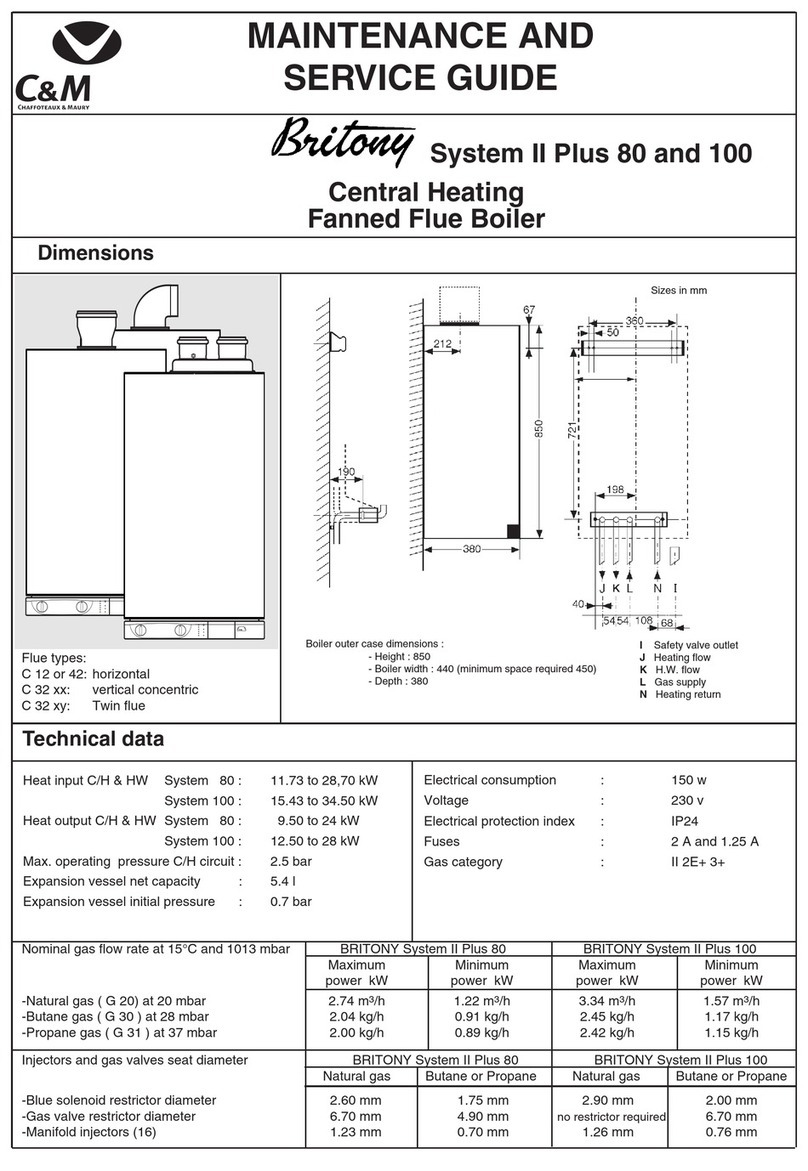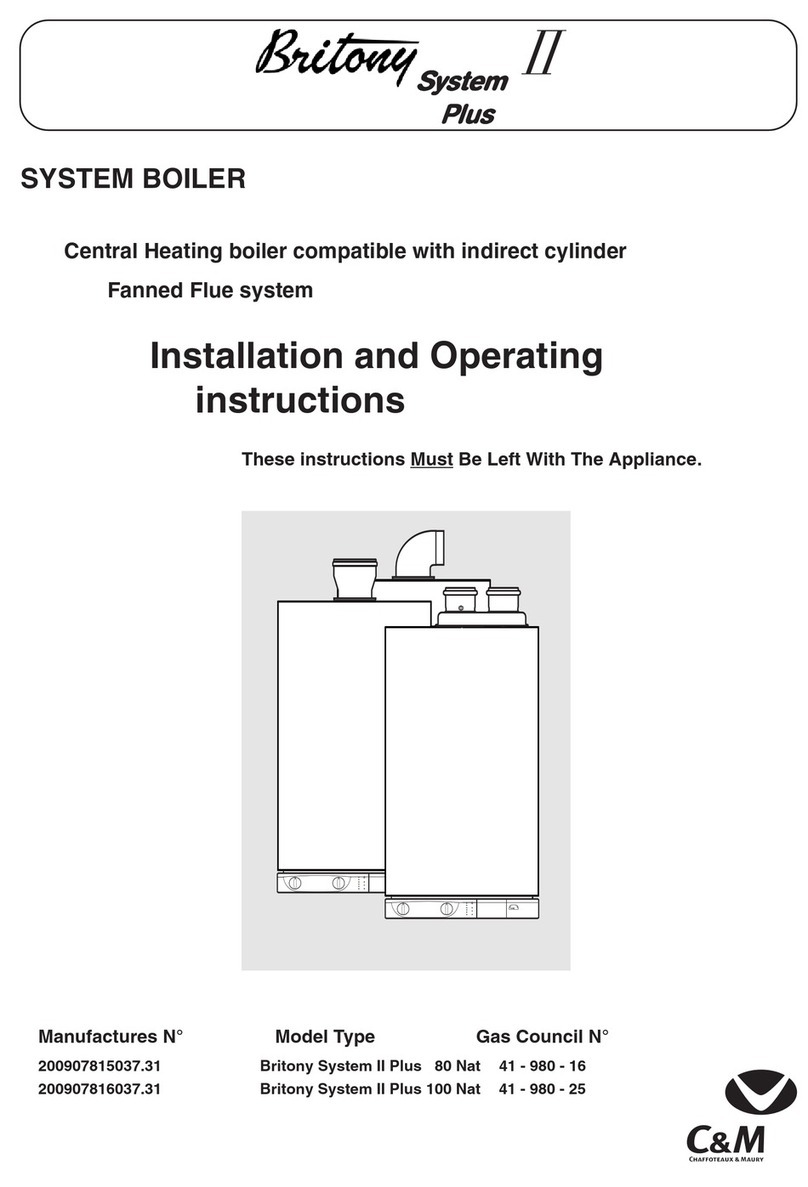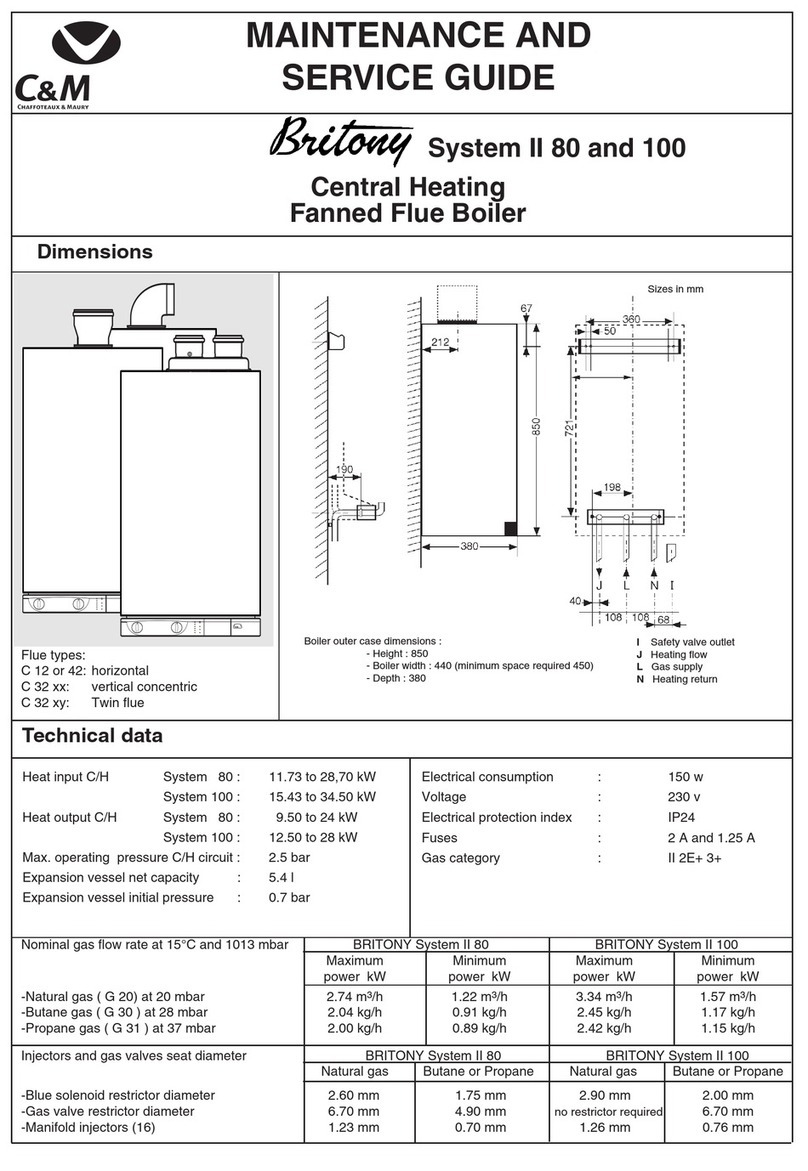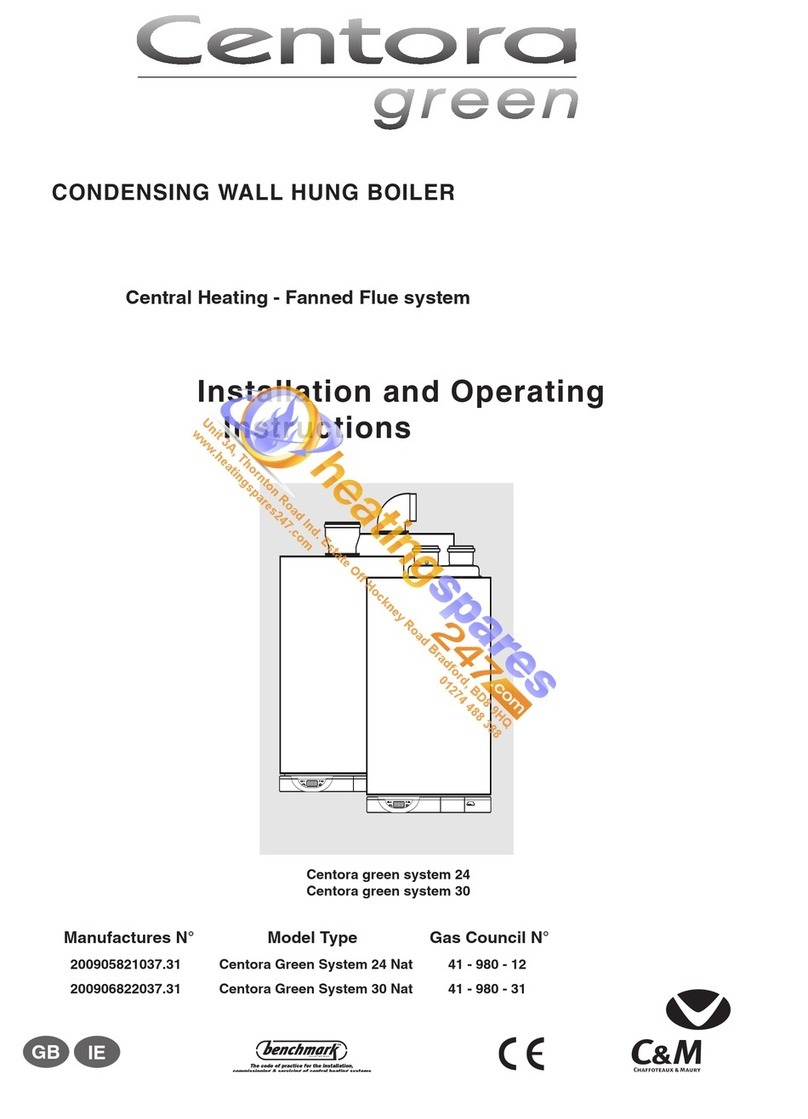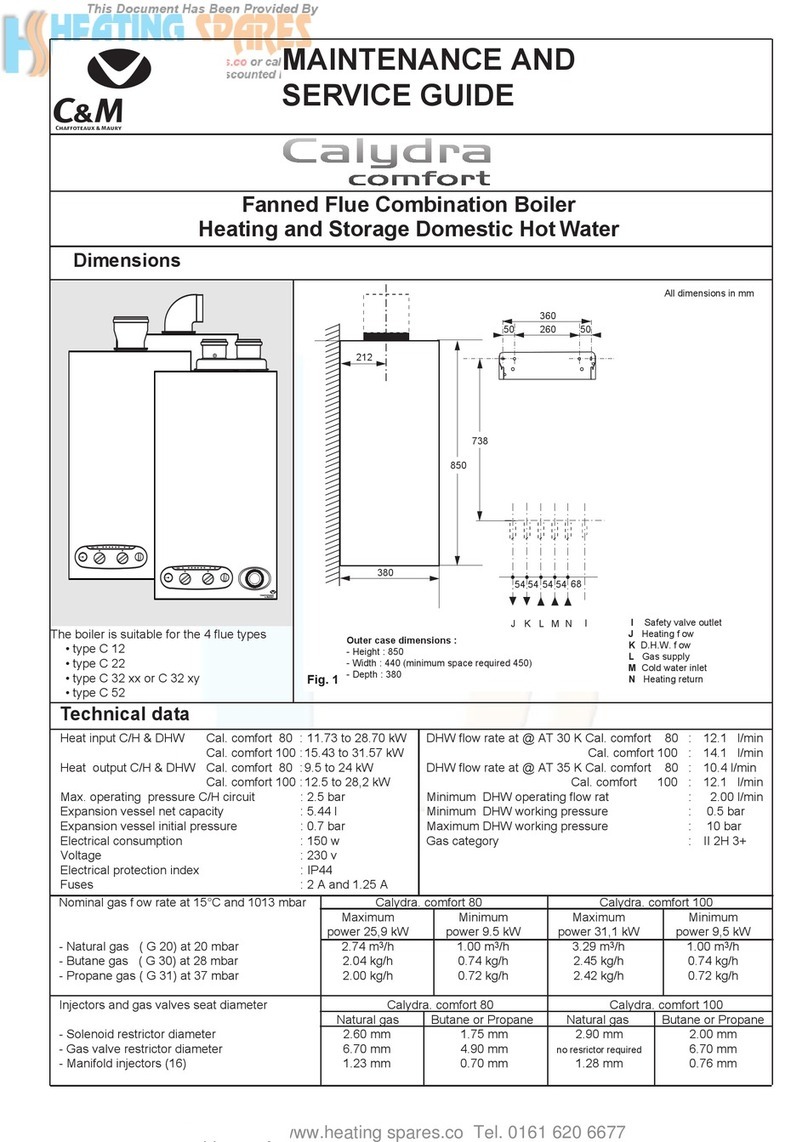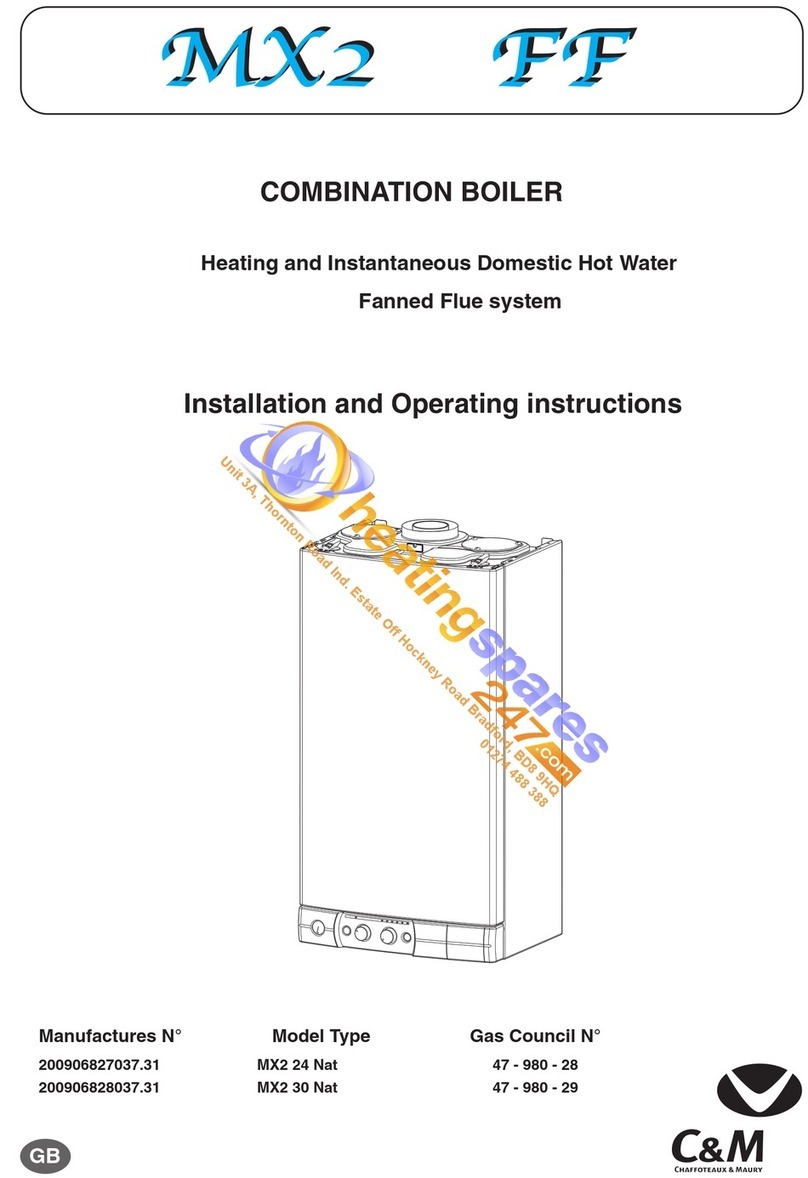
15
Electrical Supply
The appliance requires an earthed 230V - 50 Hz supply and
must be in accordance with current I.E.E. It must also be
possible to be able to completely isolate the appliance
electrically. Connection should be via a 3 amp fused double-
pole isolating switch with contact separation of at least 3 mm
on both poles. Alternatively, a fused 3 Amp. 3 pin plug and
unswitched socket may be used, provided it is not used in a
room containing a bath or shower. It should only supply the
appliance.
The boiler is suitable for sealed systems only. The maximum
working pressure for the appliance is 6 bar. All fittings and
pipework connected to the appliance should be of the same
standard. If there is a possibility of the incoming mains
pressure exceeding 6 bar, particularly at night, then a
suitable pressure limiting valve must be fitted.
The boiler is designed to provide hot water on demand to
multiple outlets within the property. If there is a requirement
for greater demands, for example if the property has several
bathrooms and cloakrooms, a vented or unvented hot water
storage system may be used.
Showers
Any shower valves used with the appliance should be of a
thermostatic or pressure balanced type. Refer to the shower
manufacturer for performance guidance and suitability.
Flushing and Water Treatment
The performance of the appliance could be impaired by
system debris or the effects of corrosion. When the
installation and filling are completed, flush the system while
cold, refill, turn on the Central Heating System (Section 2
page 6) and run it until the boiler reaches its operating
temperature. The system must then be immediately flushed
through. The flushing procedure must be in line with BS
7593:1992 code of practice for treatment of water in
domestic hot water central heating systems.
During this operation the use of a central heating flushing
detergent is compulsory, whose function is to disolve any
foreign matter that may be in the boiler and system following
the flushing procedure.
Substances different from these could create serious
problems to the pump or other components.
The use of an inhibitor is also compulsory to prevent
corrosion (sludge) damaging the boiler and system.
Failure to carry out this procedure will invalidate the
appliance warranty.
For more information on the use of corrosion inhibitors,
flushing and descaling agents, advice can be sought from the
manufacturers of water treatment products such as:
Betz Dearborn Ltd
Foundry Lane
Widnes
Cheshire
WA8 8UD
Tel: 0151 424 5351
Fernox Manufacturing
Britannica Works
Clavering
Essex
CB11 4QZ
Tel: 01799 550811
System Controls
The boiler is electrically controlled and is suitable for most
modern electronic time and temperature controls. The
addition of such external controls can be beneficial to the
efficient operation of the system. The boiler connections for
external controls are 24V and so only controls of 24V or that
have voltage free contacts should be used. (Section 13
Electrical Connections - page 27).
Location
The boiler can be installed on any suitable internal wall.
Provision must be made to allow the correct routing of the flue
and siting of the terminal to allow the safe and efficient
removal of the flue products. A compartment or cupboard may
be used provided that it has been purpose-built or modified for
the purpose. It is not necessary to provide permanent
ventilation for cooling purposes. Detailed recommendations
are given in BS 5440 pt 2. If it is proposed that it is installed in
a timber framed building then reference should be made to
British Gas Document DM2, or advice sought from CORGI.
Where a room sealed appliance is installed in a room
containing a bath or shower, the appliance and any
electrical switch or appliance control, utilising mains
electricity should be situated specifically in accordance
with current IEE Wiring Regulations.
For unusual locations, special procedures may be necessary.
BS 6798:2000 gives detailed guidance on this aspect.
Condensate Discharge
The condensate discharge hose from the boiler must have a
continuous fall of 2.5oand must be inserted by at least 50mm
into a suitable acid resistant pipe - e.g. plastic waste or
overflow pipe. The condensate discharge pipe must have a
minimum diameter of 22mm, must have a continuous fall and
preferably be installed and terminated to prevent freezing.
The discharge pipe must be terminated in a suitable position:
i) Connecting into an internal soil stack (at least 450mm
above the invert of the stack). A trap giving a water seal
of at least 75mm must be incorporated into the pipe run,
there also must be an air break upstream of the trap.
ii) Connecting into the waste system of the building such as
a washing machine or sink trap. The connection must be
upstream of the washing machine/sink. If the connection
is down stream of the waste trap then an additional trap
giving a minimum water seal of 75mm and an air break
must be incorporated in the pipe run, as above.
iii) Terminating into a gully, below the grid level but above
the water level.
iv) Into a soakaway.
NOTE: If any condensate pipework is to be installed
externally then it should be kept to a minimum and be
insulated with a waterproof insulation and have a continuous
fall. The total length of external pipe used should not exceed
3 metres.
Some examples of the type of condensate terminations can
be found on page 13.
10. Installation requirements (continued)




















